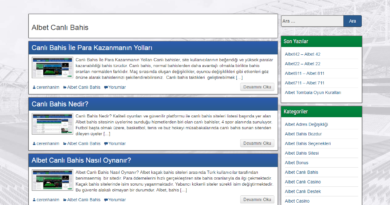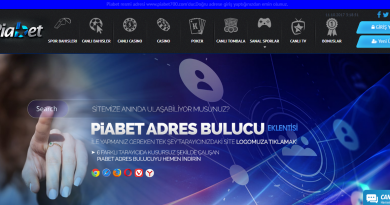How Colors and Movements Capture Our Attention
1. Introduction: The Power of Visual Stimuli in Capturing Attention
In our increasingly cluttered digital and physical environments, capturing and maintaining attention has become a critical challenge for designers, marketers, and communicators. Visual stimuli, especially colors and movements, serve as primary triggers that can cut through the noise and direct focus where it is desired.
Attention is a limited resource; our brains are constantly filtering vast amounts of information. Effective visual cues help prioritize certain stimuli, making messages more memorable and engaging. Understanding how colors and movements influence perception allows creators to craft compelling visual experiences that resonate on both conscious and subconscious levels.
Quick Navigation
2. The Psychology of Colors: How Hue Influences Perception and Attention
Colors evoke emotional responses and influence perceptions, often subconsciously guiding attention. For example, red is associated with excitement and urgency, making it effective for calls to action or warnings, while blue conveys trust and calmness, suitable for informational content.
Brightness and contrast significantly impact visibility. High contrast combinations, such as white text on a dark background, enhance readability and draw focus. Conversely, overly muted or monochromatic palettes may fail to capture immediate attention, especially in competitive environments like advertising or interface design.
Effective use of color can be seen in marketing campaigns where vibrant hues attract consumers’ eyes quickly. For instance, fast-food chains often use red and yellow to stimulate appetite and create a sense of urgency. Digital interfaces employ contrasting colors to emphasize interactive elements, making navigation intuitive and engaging.
| Color | Psychological Effect |
|---|
3. Movement as a Dynamic Attention Grabber
The human brain is wired to detect motion rapidly, a survival mechanism rooted in evolutionary biology. Neuroscientific studies show that motion activates specialized areas in the visual cortex, making moving objects more salient than static ones. This is why animated elements, flashing icons, or sudden movements effectively attract attention.
Types of movement that captivate viewers include sudden, unpredictable actions or repetitive motions that create rhythm and pattern recognition. For example, in digital interfaces, animated notifications or dynamic banners can significantly increase user engagement by guiding the eye toward key messages.
A practical illustration can be found in online gaming platforms. Games like “Star Supreme” utilize animated effects and movement to retain players’ focus, ensuring that critical features or rewards stand out. The dynamic effects not only entertain but also subtly influence player behavior by directing attention to specific game elements.
Neuroscience Behind Motion Detection
Research indicates that the human visual system detects motion within approximately 100-200 milliseconds, making it one of the fastest perceptual processes. This rapid detection underpins the effectiveness of moving cues in design, advertisements, and user interfaces.
4. The Interplay Between Colors and Movement
When combined, colors and movement create powerful synergistic effects that direct focus more effectively than either element alone. For example, a brightly colored, flashing call-to-action button can outperform static, monochrome alternatives in engaging users.
In advertising, dynamic visuals that incorporate vibrant hues and animated sequences are more likely to catch the eye and evoke emotional responses. Similarly, in gaming and digital media, combining color cues with movement guides user attention seamlessly, enhancing overall experience.
Movement can amplify color cues by creating contrast in motion, such as a colorful object moving against a static background, thereby increasing perceptual salience. Conversely, vibrant colors can make movement more noticeable, prompting quicker responses.
5. Cultural and Contextual Factors in Attention Capture
Color perception and the interpretation of movement are influenced by cultural backgrounds and contextual cues. For instance, while white symbolizes purity in many Western cultures, it is associated with mourning in some Asian societies. Such differences imply that global designs must consider cultural sensitivities to ensure effective attention capture.
Similarly, certain movement patterns, like open gestures, may be interpreted as welcoming in some cultures but intrusive in others. Understanding these variations is vital for international marketing and interface design to avoid miscommunication and optimize engagement.
6. Technological and Accessibility Considerations
Designing with accessibility in mind involves adhering to standards such as WCAG 2.1, which recommend sizing touch targets and providing sufficient contrast. For example, animated elements should not trigger seizures or cause discomfort; thus, motion should be smooth and controllable.
Ensuring that color choices are perceivable by users with color vision deficiencies involves using high contrast and avoiding problematic combinations like red-green. Additionally, movement cues should be distinguishable through multiple sensory channels, such as sound or haptic feedback, to accommodate diverse user needs.
Balancing visual appeal with accessibility ensures that attention-guiding elements do not exclude or frustrate users, thereby fostering inclusivity.
7. Scientific Insights and Modern Examples: The Case of “Star Supreme”
Modern digital experiences exemplify the principles of attention capture through the strategic use of vibrant colors and movement. free spins start at x2 multiplier in online slot games like “Star Supreme” demonstrate how dynamic visual effects and reflective color properties, such as gold reflecting infrared, enhance visual appeal and player engagement.
These elements do not merely entertain but are carefully designed to guide the player’s focus, encouraging interaction and prolonging engagement. The movement of stars, shimmering effects, and color reflections create a captivating environment that draws attention subconsciously and consciously alike.
8. Non-Obvious Factors Influencing Attention
Beyond obvious cues, subtle factors significantly influence attention. For instance, research shows that most English readers process left-to-right text approximately 280 milliseconds faster than right-to-left readers, affecting how visual elements should be positioned for maximum impact.
Peripheral vision awareness allows users to subconsciously detect movement or color cues outside their direct focus, which can be leveraged through subtle animations or color shifts to guide attention without overwhelming the viewer.
“Subtle cues, when used thoughtfully, can trigger psychological responses that enhance engagement without overt distraction.”
9. Future Trends and Innovations in Visual Attention Capture
Technologies like augmented reality (AR) are opening new frontiers for attention guidance, allowing for immersive and context-aware visual stimuli. Personalized content, tailored through user data and behavior, can optimize attention capture on an individual level.
However, ethical considerations are paramount. Manipulating attention through colors and movements must respect user autonomy and avoid manipulative practices that could lead to fatigue or distrust.
10. Conclusion: Harnessing Colors and Movements Effectively
Understanding how colors and movements influence perception enhances our ability to design compelling visual experiences. Key principles include using high-contrast colors for immediate visibility, incorporating movement to sustain interest, and considering cultural and accessibility factors to reach diverse audiences.
For content creators and designers, practical tips involve balancing vibrant visual cues with user comfort and inclusivity. As modern technology evolves, leveraging innovations like AR and personalization offers exciting possibilities, provided ethical boundaries are maintained.
By applying these insights, we can craft visuals that not only attract attention but also foster positive and inclusive engagement across various contexts.


